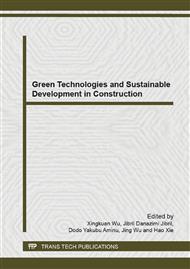p.251
p.255
p.259
p.265
p.273
p.277
p.281
p.285
p.289
Public Housing in Bandung an Assessment and Approaches through Urban Physics
Abstract:
High density of population and vertical buildings seems to be the only aspect fit to the concept for city in the developing country. The vertical housings then become a matter of necessity in high density area, in which the building groups themselves significantly contribute to microclimate at urban scales. This study is going to give descriptions of outdoor thermal comfort of public housing in Bandung by means its correlation between urban forms and mean radiant temperature. A number of simulations have used ENVI-met to reveal a better urban form which addresses the role of urban physics in the study of outdoor thermal comfort in a hot humid climate area.
Info:
Periodical:
Pages:
273-276
Citation:
Online since:
May 2014
Authors:
Keywords:
Price:
Сopyright:
© 2014 Trans Tech Publications Ltd. All Rights Reserved
Share:
Citation:


